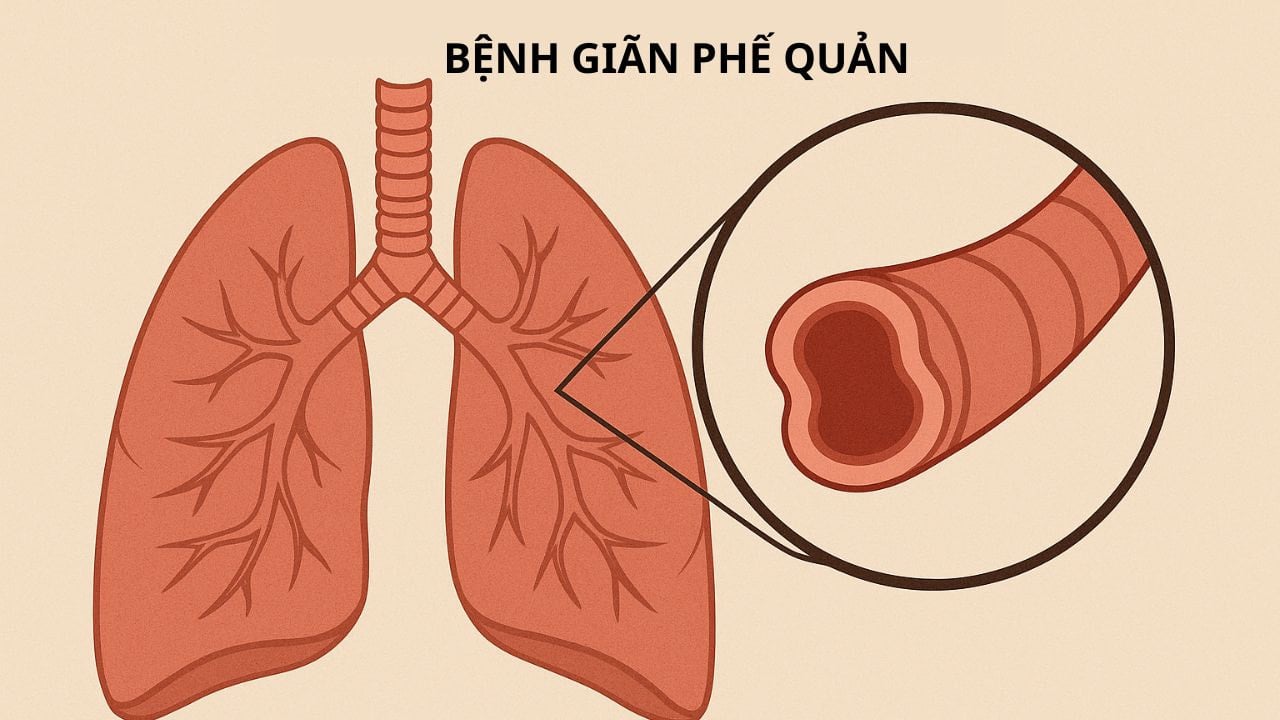70-year-old man in deep coma due to severe hemoptysis due to bronchiectasis
A 70-year-old man, residing in Nui Thanh commune, Da Nang city, was taken to Quang Nam Central General Hospital in a coma, with difficulty breathing, coughing up massive blood, severe respiratory failure, and blood oxygen concentration (SpO2) of only 65%.
Upon admission, doctors promptly intubated the patient, suctioned blood from both lungs, administered a ventilator, transfused blood, and performed intensive resuscitation to sustain life. CT scan results determined that the patient had localized bronchiectasis in the lower lobe of the right lung, which was the cause of severe hemoptysis.
After a multidisciplinary consultation, the team decided to perform laparoscopic surgery to remove the lower lobe of the right lung to stop the bleeding and remove the damaged area. The surgery was successful, the patient stopped coughing up blood, recovered quickly and has now been discharged from the hospital.
This is a lucky case that was saved after falling into a deep coma due to severe hemoptysis due to bronchiectasis, thanks to early detection and timely treatment.
What causes bronchiectasis?

Bronchiectasis is a disease that can occur in all ages, from very young patients to the elderly.
There are many causes of bronchiectasis, the most common of which are:
Congenital defects
- Kartagener's syndrome: diffuse bronchiectasis with sinusitis and situs inversus.
- Williams-Cambell syndrome: defect or absence of bronchial cartilage so the bronchi expand when breathing in and collapse when breathing out.
- Mounier – Kunhn syndrome: bronchial hypertrophy due to structural defects of connective tissue in the bronchial wall accompanied by bronchiectasis.
Due to necrotizing inflammation in the bronchial wall
Bronchiectasis after lung infections such as tuberculosis, bacterial pneumonia, viral pneumonia, measles, whooping cough, due to inhalation of gastric juice, inhalation of toxic fumes (ammonia), due to recurrent bronchial infections.
Due to cystic fibrosis
Bronchiectasis occurs in 50% of cases of cystic fibrosis, most commonly in Europe and North America. Bronchiectasis usually occurs late in the disease.
Due to bronchial obstruction
Bronchial tuberculosis, bronchial foreign bodies, bronchial tumors or fibrotic scars cause bronchial stenosis. Below the stenosis, intrabronchial pressure increases and bronchial secretions stagnate, causing chronic local infection and developing into bronchiectasis.
Bronchial wall contracture granulomatous fibrotic lesions
Pulmonary tuberculosis, cavitary tuberculosis, chronic lung abscess, fibrosing alveolar disease. Lung parenchyma is destroyed, fibrosis leads to irreversible bronchiectasis and retraction. Because most cases of post-primary pulmonary tuberculosis mainly affect the apical lobe and posterior segment of the upper lobe, bronchiectasis is often found in these locations, the common symptom is hemoptysis.
Cilia clearance disorder
- Primary ciliary dyskinesia syndrome.
- Secondary ciliary dyskinesia due to asthma. In these cases, bacteria often develop in the lower respiratory tract.
- Disorders of lung defense mechanisms.
- Congenital or acquired immunodeficiency such as hypogammaglobulinemia, selective reduction of IgA, IgM, IgG.
- Acquired immunodeficiency: due to immunosuppressive drugs, HIV/AIDS, multiple myeloma, leukemia.
- Allergic bronchopulmonary aspergillosis
This is a semi-slow immune response and deposition of precipitating antibodies (IgM, IgG) in the bronchial wall, the consequence of which is bronchiectasis (according to Gell-Coombs) and the development of bronchiectasis. Excessive immune response can also occur after lung transplantation.
Symptoms of bronchiectasis
- Persistent cough, daily expectoration of purulent sputum, this is a very important symptom. Sputum increases when there is bronchial infection. There are some cases of dry cough without sputum (dry bronchiectasis in the upper lobe, often after tuberculosis). Some cases have signs of pansinusitis causing bronchial sinus syndrome.
- Sputum has three layers: the upper layer is foam, the lower layer is pus, and the bottom layer is mucus. Sputum can have a foul odor when infected.
- Coughing up blood: dry form mainly coughs up blood without expectoration. Coughing up blood is rare in children. Coughing up blood recurs many times and can last for many years. Severity ranges from mild to severe. Coughing up blood may be the only sign of the disease.
- Dyspnea is also a common symptom, often seen in patients with associated bronchiectasis.
- Chest pain: may be an early sign of bronchial infection in the bronchiectasis area.
- Prolonged illness leads to weight loss, anemia, fatigue, and clubbing of fingers.
- Dyspnea, cyanosis if bronchiectasis spreads to both lungs.
In summary: Bronchiectasis is a disease that can occur in all ages, from very young patients to the elderly. The disease has many different causes, finding the cause of bronchiectasis is an important step contributing to the effective treatment of the disease. Therefore, when there are unusual symptoms, you need to go to a medical facility for examination and treatment.
Source: https://suckhoedoisong.vn/ho-ra-maucan-canh-giac-voigian-phe-quan-169251113190643636.htm


![[Photo] Panorama of the 2025 Community Action Awards Final Round](https://vphoto.vietnam.vn/thumb/1200x675/vietnam/resource/IMAGE/2025/11/15/1763206932975_chi-7868-jpg.webp)
![[Photo] Prime Minister Pham Minh Chinh meets with representatives of outstanding teachers](https://vphoto.vietnam.vn/thumb/1200x675/vietnam/resource/IMAGE/2025/11/15/1763215934276_dsc-0578-jpg.webp)



![[Photo] General Secretary To Lam receives Vice President of Luxshare-ICT Group (China)](https://vphoto.vietnam.vn/thumb/1200x675/vietnam/resource/IMAGE/2025/11/15/1763211137119_a1-bnd-7809-8939-jpg.webp)






































































































Comment (0)